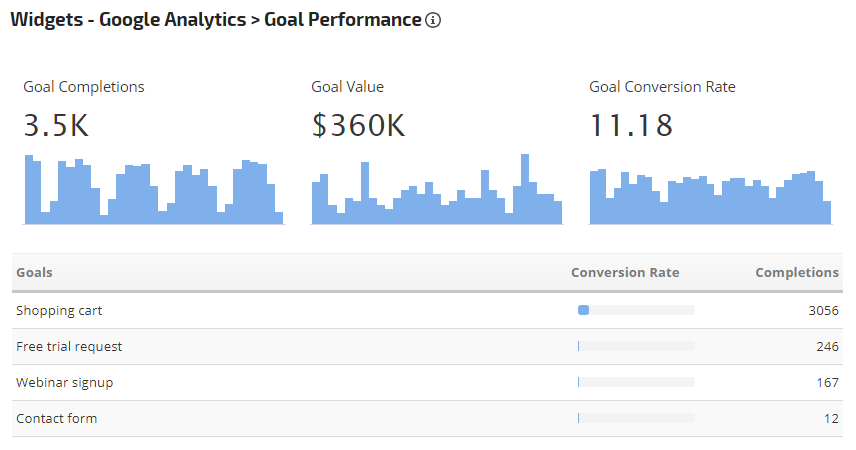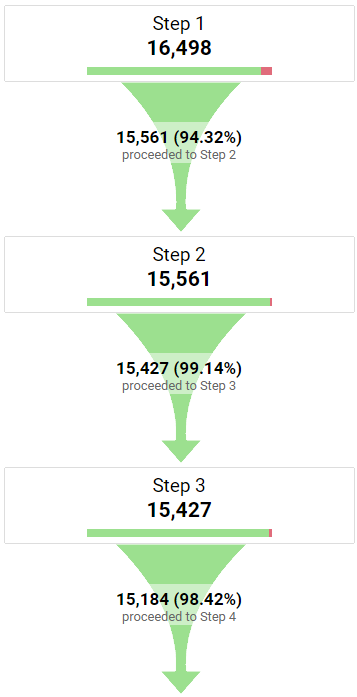What Data Is Google Analytics Goals Unable to Track: A Complete Guide
What Data Is Google Analytics Goals Unable to Track: A Complete Guide
Blog Article
Debunking Google Analytics Limitations: Discover What Data Goals Can not Track
In the world of digital analytics, Google Analytics stands as a powerful device that offers valuable understandings right into web site performance and individual behavior. However, amidst its capacities, there exist limitations that usually go undetected. Understanding what Google Analytics can not track is crucial for a detailed grasp of data analysis and decision-making procedures. From the intricacies of user communication with vibrant material to the intricacies of cross-device user journeys, these constraints dropped light on areas that might stay covered from conventional analytics viewpoints. By untangling these restrictions, a clearer photo arises, enabling more enlightened strategies and refined understandings into customer engagement and conversions.

Customer Communication With Dynamic Content
Customer interaction with vibrant content plays a vital duty in understanding individual habits on sites and optimizing the total user experience. Dynamic material refers to aspects on a page that can change without the need for a full web page reload. This consists of interactive elements such as pop-ups, sliders, forms, and videos that react to customer actions in real-time. By tracking individual communications with vibrant material, site owners can get valuable insights into individual engagement, choices, and habits.
Google Analytics offers various devices to track customer communications with vibrant web content, such as occasion tracking and virtual pageviews. Occasion tracking allows you to keep an eye on details customer activities, like clicking a switch or enjoying a video, offering information on just how individuals engage with dynamic elements. Digital pageviews can be utilized to track interactions that do not result in a new web page tons, offering a thorough sight of individual involvement with vibrant material. By evaluating this information, site proprietors can make educated choices to improve individual experience and drive conversions.
Cross-Device User Journeys
Just how can modern analytics devices track the complicated paths customers take across multiple gadgets in their online trips? Cross-device user trips provide a considerable challenge for tracking and analyzing customer behavior precisely. As users engage with applications or websites utilizing numerous devices such as mobile phones, tablet computers, and desktops, it ends up being essential to comprehend just how they relocate between these platforms to enhance individual experience properly.
Google Analytics encounters constraints in tracking cross-device customer trips as a result of privacy concerns and technical constraints - what data is google analytics goals unable to track. While it can supply understandings into private devices' interactions, tracking a seamless user journey across several gadgets continues to be an obstacle. This limitation can cause insufficient data and fragmented user insights, making it challenging for services to create a unified view of the consumer trip
To resolve this problem, companies can utilize innovative analytics devices that offer cross-device tracking capabilities, permitting them to get a much more all natural understanding of individual actions. By leveraging these tools, companies can link the void in tracking cross-device individual journeys and enhance their digital approaches for a smooth customer experience.
Offline Conversions and Acknowledgment
As companies navigate the difficulties of tracking cross-device user journeys, an additional crucial element to think about is the world of offline conversions and attribution in the realm of information analytics. While Google Analytics supplies important understandings into online customer behavior, it fails when it concerns tracking conversions that take place offline. This restriction presents a considerable obstacle for companies that have both online and offline sales networks.
Offline conversions, such as purchases made in physical stores or via phone call facilities, are vital to understanding the total consumer journey. Without the capacity to attribute these offline conversions to specific online communications, services might struggle to precisely gauge the influence of their digital advertising and marketing efforts.
To address this void, businesses can discover alternative options such as incorporating CRM systems with online analytics tools or using unique discount codes that can be mapped back to on-line campaigns. By bridging the space in between online and offline data, companies can get a much more comprehensive understanding of their clients' actions and improve their overall advertising approaches.
Person Individual Recognition
In the world of data analytics, the ability to properly recognize specific customers throughout numerous on-line touchpoints is an important obstacle for services looking for to individualize and optimize their advertising methods. While Google Analytics gives beneficial understandings right into user behavior and communications, it drops brief in allowing the recognition of details people as a result of personal privacy worries and technical restrictions. Google Analytics utilizes one-of-a-kind identifiers such as cookies to track user sessions and actions, yet these do not relate to identifying individual customers in an individual sense.

Information From Secure Pages
Regardless of the increasing occurrence of protected web pages on web sites, obtaining information from these encrypted sources offers a distinct difficulty for digital analytics systems like Google Analytics. Secure web pages, shown by HTTPS in the link, secure information exchanged in between the individual's web browser and the web site's server to make certain privacy and protection. While this security is essential for securing delicate information, it likewise positions restrictions for tracking customer behavior and event analytics information.
Google Analytics faces challenges in collecting in-depth details from protected web pages as a result of the encryption protocols in position. As an outcome, certain data points such as recommendation resources, keyword searches, and even some individual communications might not be totally captured when users access a web site via a my company secure connection. This restriction can affect the precision and completeness of the data analysis, resulting in voids in recognizing user habits and choices on safe and secure pages.
To navigate this challenge, digital analysts might require to check out alternate monitoring techniques or leverage other tools specifically developed to gather insights from protected web pages. By adjusting strategies to accommodate these restrictions, businesses can still acquire beneficial analytics in spite of the constraints presented by encrypted connections.
Verdict
Finally, Google Analytics has limitations in tracking customer communication with dynamic content, cross-device user journeys, offline conversions, private user identification, and information from safe and secure web pages. These constraints prevent a comprehensive understanding of customer habits and may lead to voids in information evaluation. In spite of its valuable understandings, Google Analytics may not offer a complete picture of customer interaction across numerous touchpoints. It is necessary for organizations to be familiar with these constraints and consider supplemental tools for an extra holistic sight of their information.
Customer interaction with vibrant content plays an essential function in understanding customer actions on websites and maximizing the overall individual experience. By tracking customer communications with vibrant content, site proprietors can gain important understandings into individual involvement, preferences, and habits.
Google Analytics makes use of distinct identifiers such as cookies to track user sessions and habits, but these do not equate to determining specific customers in an individual sense.
As an outcome, certain data factors such as click this reference sources, keyword searches, and also some customer interactions may not be completely caught when individuals access a web site via a secure connection.In conclusion, Google Analytics has restrictions in tracking individual interaction with dynamic material, cross-device individual trips, offline conversions, specific customer recognition, and information from safe pages.
Report this page